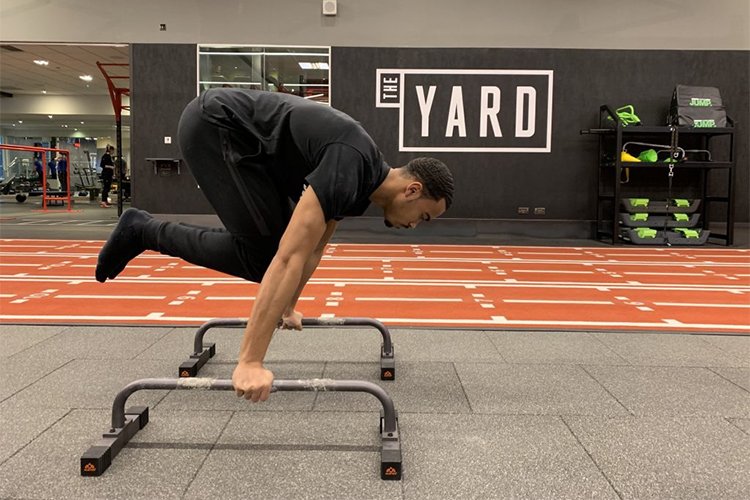
Learn how to master the planche, a high-level strength exercise that transforms your body into a floating plank.
Are you ready to defy gravity and impress onlookers with a jaw-dropping display of strength and balance? Then try the planche, a gymnastic feat that goes way beyond the average plank or push-up.
To master the planche, you’ll need to learn to float your body parallel to the ground, a mind-blowing trick that’s worth the sweat.
But what exactly is a planche and how can you do it? Let’s break down the basics into five bite-sized chunks that’ll have you mastering the planche in no time.
The planche is a gravity-defying miracle that sees you transform into a human plank, floating parallel to the ground, supported only by your arms. It epitomizes coolness and requires serious upper body strength, killer balance, and intense core engagement.

To master this move, you’ll need to keep your delts, chest, and triceps—your main takeoff muscles—tight. Your lower back, abs, and legs are also in action, working hard to keep you stiff and straight as a board.
A planche doesn’t happen overnight, but you can work your way up to this impressive skill with the right progression exercises. Follow these steps to get started.
The planche incline strengthens the wrists and strengthens the shoulders. Start in a basic plank position: hands on the floor, fingers spread wide, and arms straight.
Gradually shift your weight forward and move your shoulders past your wrists while keeping your arms straight, core engaged and body in line from head to toe without sagging or hunching.
As you build endurance, deepen the incline to intensify the exercise. If wrist strain becomes a problem, you can use parallettes or push-up bars to keep them in a neutral position and relieve discomfort.
Start in the planche position with your hands on the floor, fingers spread and arms extended. Slowly lift your feet off the floor, using your shoulders and core to support your body weight.
As you lift your feet, pull your knees close to your chest and round your back slightly to maintain a compact and balanced form. Keep your hips in line with your shoulders.
Hold the tuck planche for a few seconds, gradually increasing the duration as you progress.

From the tuck planche position, gently push your knees away from your chest, keeping them bent. This subtle movement adds an extra layer of challenge and increases the distance your shoulders and core must travel.
Remember to keep your core engaged as you pull your knees outward, and make sure you maintain your balance and your body control is sharp. Don’t let the hips sway or bend. Once you’re comfortable in this new position, gradually increase the knee extension.
From an advanced tuck planche, gradually spread your legs into a straddle position. This reduces leverage and allows you to balance more easily as you build your body for a full planche.
You’ve reached the pinnacle of planche training! Start in the straddle planche and when you feel stable and ready, gradually extend your legs all the way back, toes pointed. Your body should be completely parallel to the floor.
As before, engage your core and make sure your palms are pressed firmly to the floor or your parallettes so the pressure is evenly distributed.
Try to hold the position for a few seconds, gradually increasing the duration as your strength, endurance and balance improve.